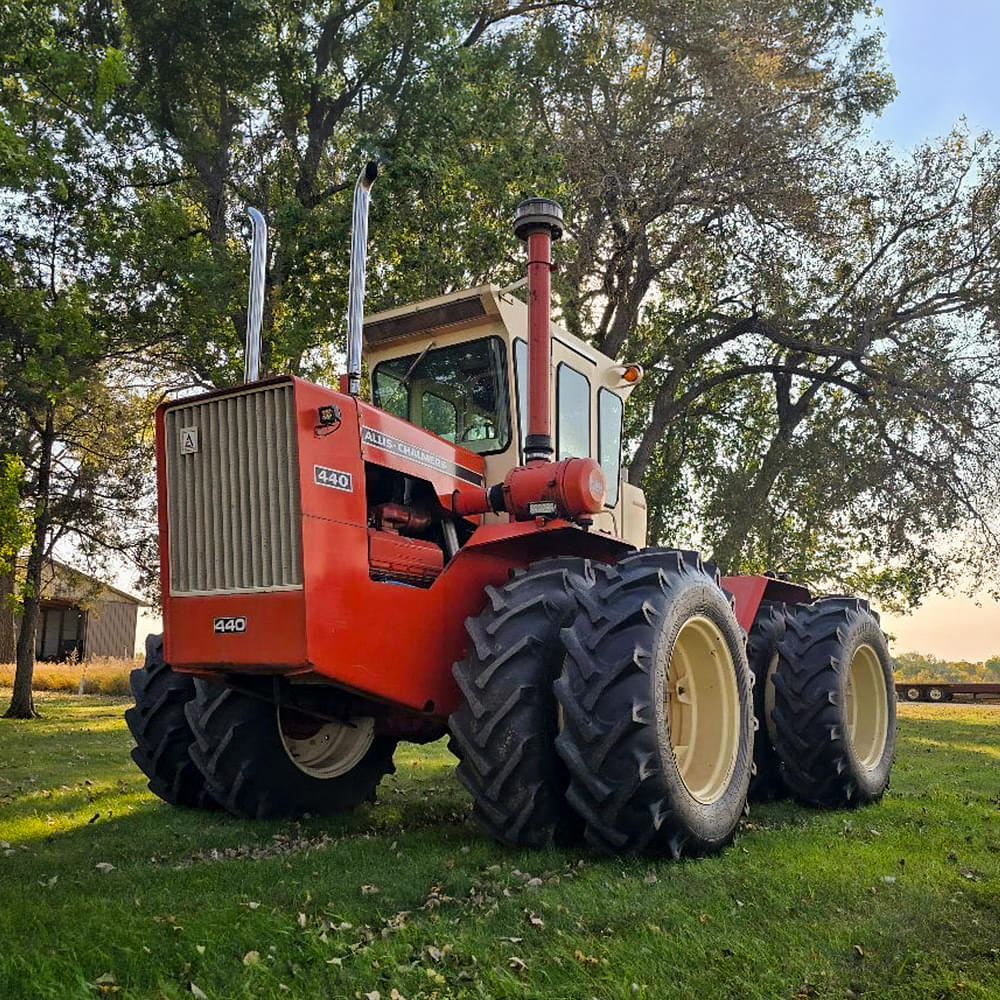
INTERESTING IRON
Allis Chalmers 440: Fashionably late…sort of.
Ryan Roossinck
October 24, 2024

Whenever an Allis Chalmers 440 shows up on an auction, it always grabs my attention. This one was no different. Granted, it’s prettier than most, but still…

Browse all equipment from Aumann Vintage Power
Find additional farm equipment for sale from Aumann Vintage Power in Nokomis, IL.
At any rate, the way these tractors came about is kind of interesting. Let’s dig in a little deeper, shall we? Along the way, we’ll take a look at this one that lives in South Dakota until it sells on an auction wrapping up on November 6th, 2024!
A-C 440 listings on Tractor Zoom
Lots of people say that the 440 was A-C’s first 4WD; however…it wasn’t. Allis Chalmers actually had a 4WD farm tractor in 1963, but it wasn’t exactly highlight-reel material.
T16: The “Sugar Babe”
Like the rest of the industry players, Allis Chalmers saw the need for a 4WD farm tractor in the early sixties. However, rather than develop a clean-sheet design, they decided to try to repurpose the TL16 loader from the industrial lineup. The resulting tractor was called the T16, and it was a pretty good idea in theory. However, in the field a heavy tractor with a turbocharged 344 cubic inch four banger is just way too underpowered. Heck, even when they dropped in a 426, it didn’t help very much. Furthermore, the torque converter in the six speed Allison powershift transmission didn’t want to lock up in tillage, leading to some pretty significant overheating problems.
After all the problems in the field, A-C decided it’d be a better idea to cut their losses and buy them all back from the farmers. There was one area of the country where they seemed to work, though – sugar cane country (hence the nickname). They worked great down in Florida and Louisiana, and that’s where most all of them ended up!
Ultimately, the Tractor Division sold only about fifteen T16s in Persian Orange, with a few more in construction yellow. I believe the total production was right around 100 units. In any case, they’re rare today, occasionally spotted on sale – like one I saw on Facebook Marketplace earlier this year in Kansas.
Either way, A-C’s first foray into the 4WD market was disappointing, and it left a bad taste in their mouth.
That brings us to the 440.
Allis Chalmers 440 development…
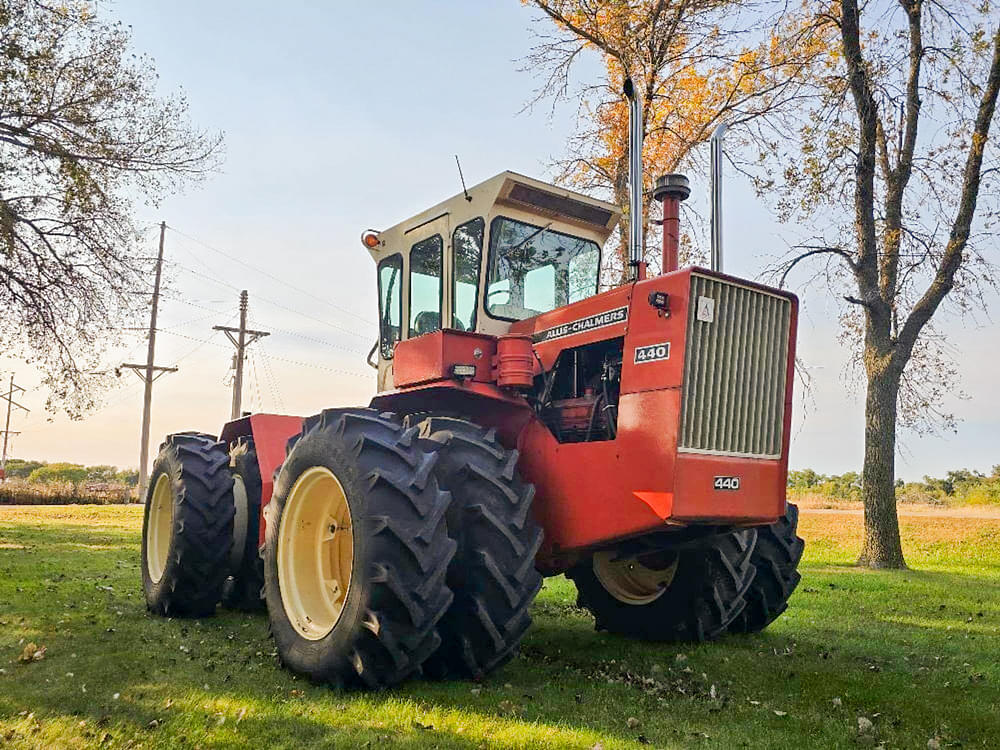
By the late sixties, Allis Chalmers was fashionably late behind the curve as far as a 4WD farm tractor was concerned. Nearly every major competitor had one, and the company was beginning to see the effects in the profits. Furthermore, the dealers weren’t happy about it either and they made those frustrations known. Some even began selling Versatile or Steiger so they had something to fill out the lineup.
It wasn’t that they hadn’t talked about it; according to Norm Swinford, a long-time Allis employee, ideas had been kicked around, but none of them went anywhere. At this point, though, there was a hole in their lineup and they had to address it.
Crossroads: Build it…or buy it?
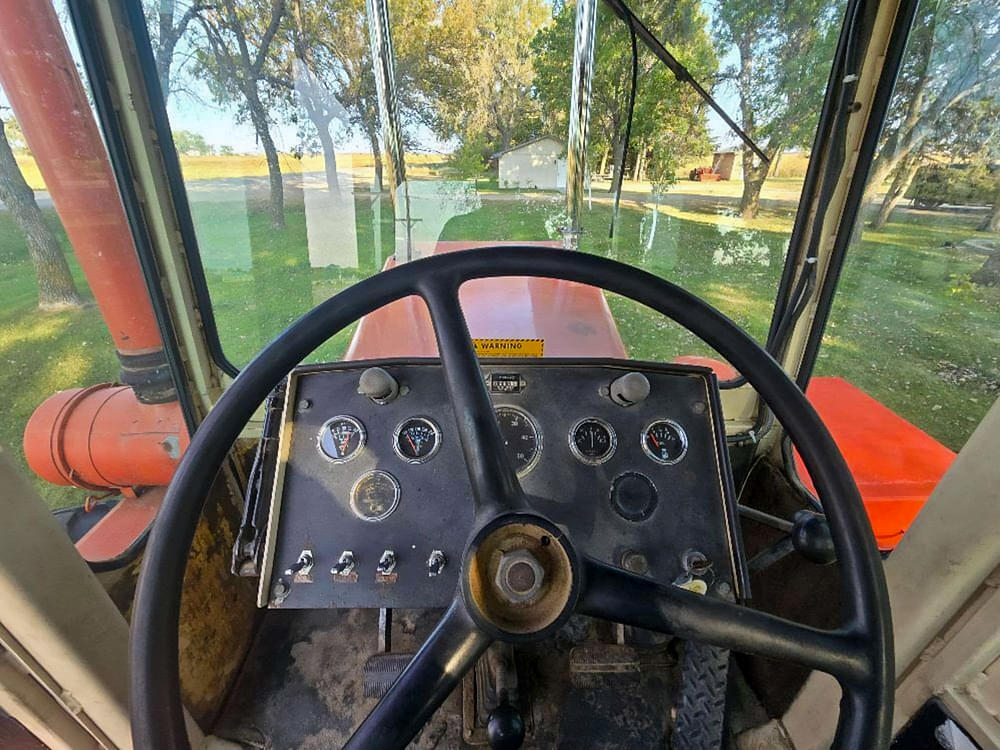
This presented a bit of an issue, though. Product development and engineering resources were all tied up working on the 7000-series row crops. There really weren’t any available resources to divert to building a 4WD in-house. So, Allis went shopping. The only way they figured they could fill the hole in their lineup was to have somebody build them a 4WD.
Shopping for a 4WD
Their first choice was Steiger. Now, I don’t know exactly when AC floated the idea across their bow, but I’m guessing that this was probably some time in 1968 or 1969. At any rate, they weren’t interested. They were busy building their own machines, and the timing wasn’t right.
So, they moved on down the list. They briefly flirted with Mississippi Road Supply, as they built big industrial 4WDs to be hooked on to dirt pans and the like. And while MRS was game, they couldn’t get to numbers that would work for both companies.
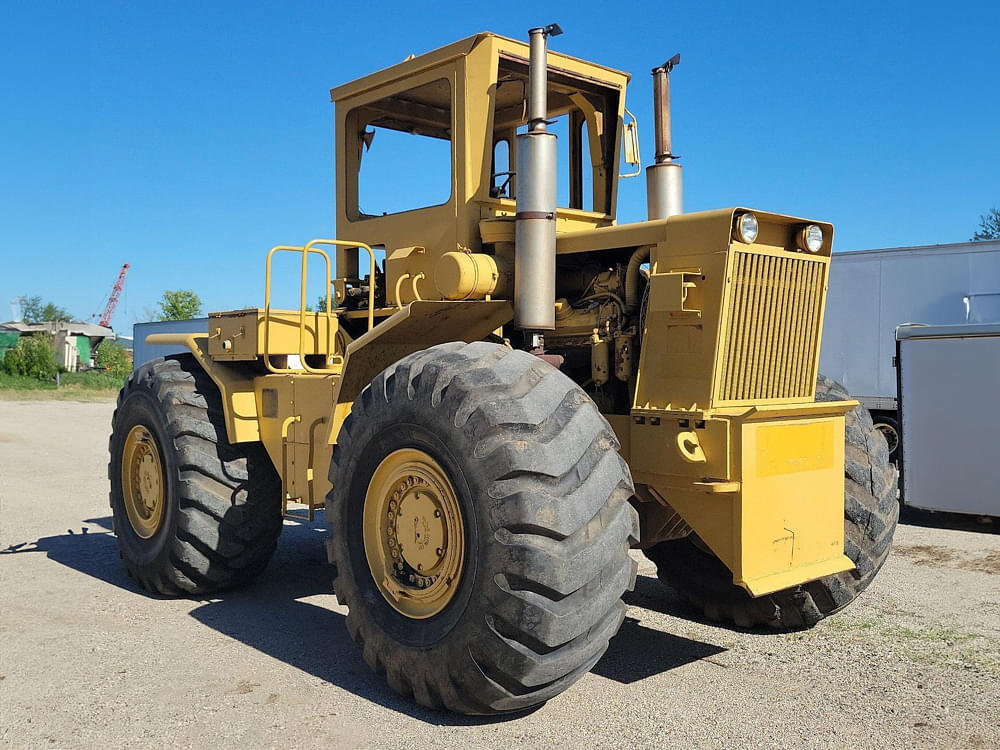
They also talked to White Farm Equipment about potentially re-skinning the Minneapolis-Moline A4T-1600 Plainsman as an Allis Chalmers, too. They wanted to test the tractor with both the big-cube Moline 585 engine and the Allis 426 for power, and grafting a 220 hood on the tractor for styling. Sadly, this deal never built much steam, either.
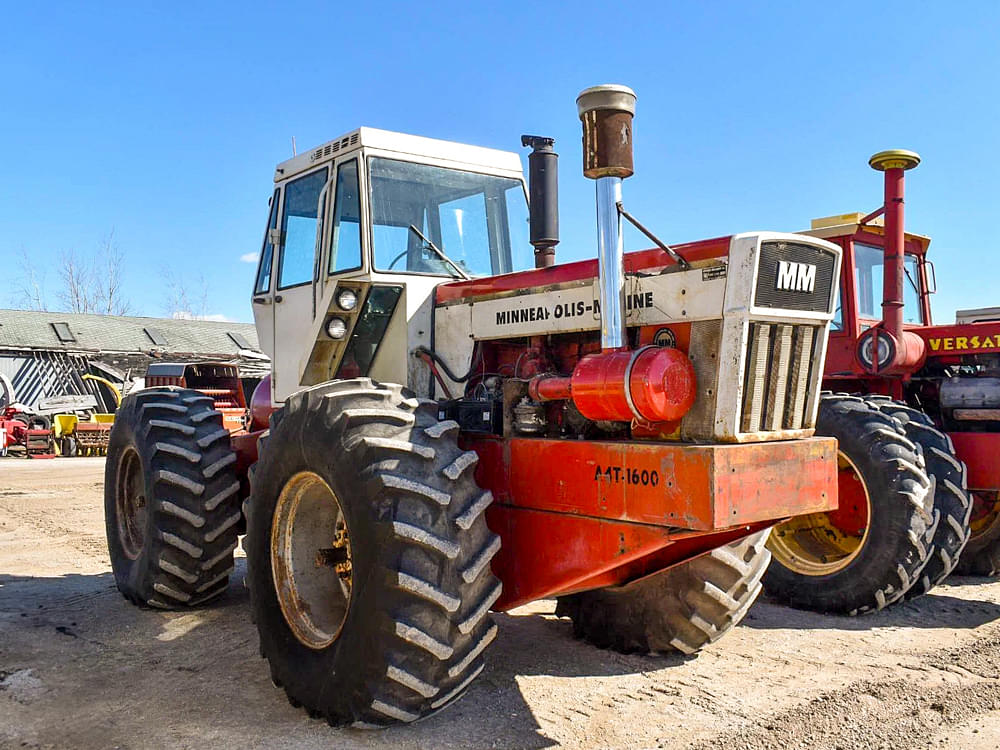
Honestly, it wasn’t looking good. Then, in a stroke of luck, Steiger came back to the table. With a change in management and moving manufacturing to Fargo, Steiger needed work if they were going to keep the lights on. After some discussion, design, and testing, Allis Chalmers signed the deal with Steiger in 1971.
The Allis Chalmers 440 finally comes to fruition
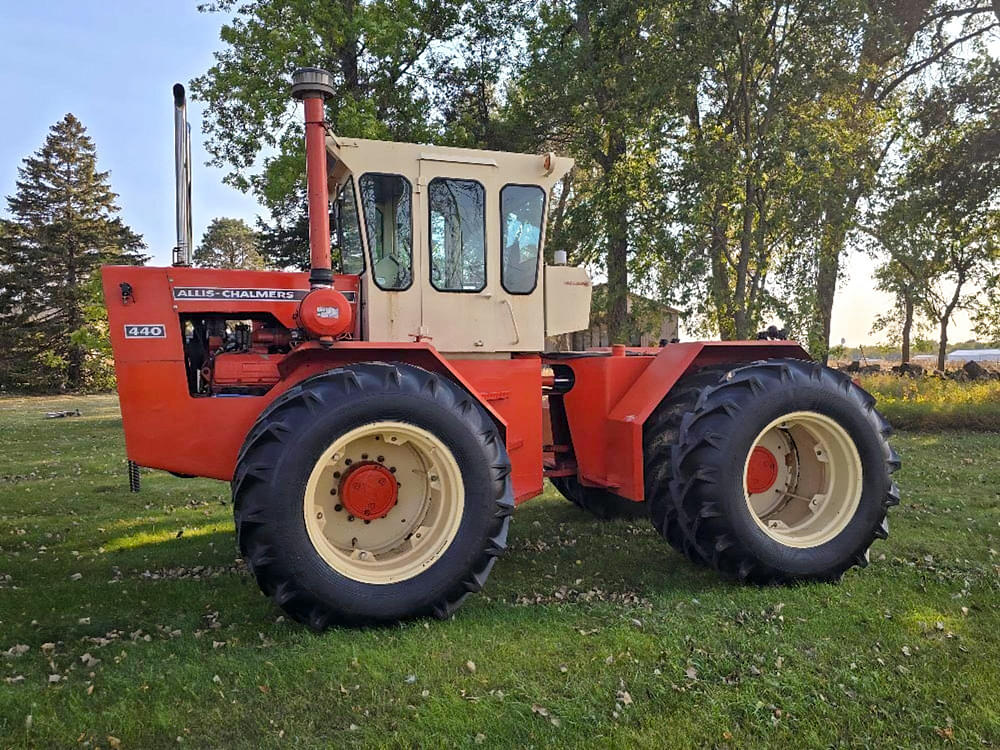
The 440 was introduced as a mid-year 1972 model. The tractor was based very heavily on the Steiger’s Bearcat, released a couple years earlier. Both were rated for about the same power (218 for the Allis, 225 for the Steiger), had the same Fuller 10-speed transmission, Steiger’s dropbox, and axles from Dana (and later production from Franklin, I believe). They didn’t come with a PTO, but a 3-point hitch was standard ( and an optional quick hitch was also available).
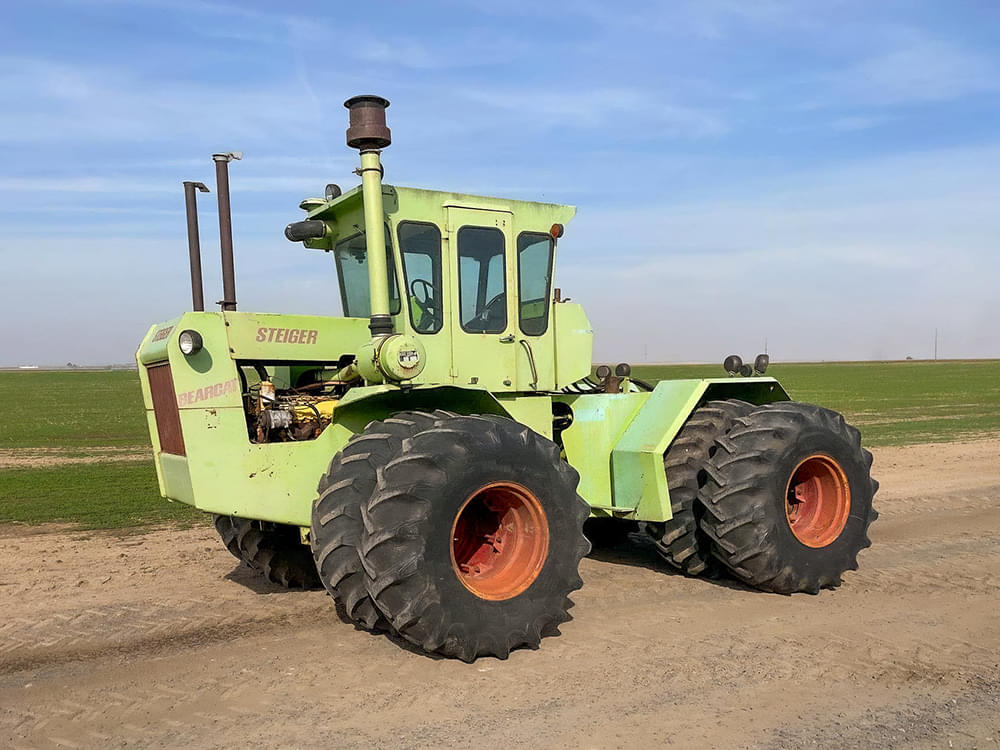
They were even priced pretty close, too.
There was, however, one difference under the hood…and it was a big one.
The Triple Nickel
When Allis Chalmers was working with Steiger to spec out the 440, they tested two engines in the tractor; the 3208 CAT (which was already in the Bearcat) and the Cummins 555 (AKA “The Triple Nickel”). And, at the end of the day, they chose the Cummins powerplant. Shortly thereafter, Steiger got to work.
In hindsight, it feels like either of these two choices were the worst possible engine options on the planet for this tractor. Steiger definitely chose the better of the two, in my opinion.
Like the 3208 CAT, the 555 Cummins was a V8 that needed to run at high RPM to make power. That might be okay in some applications, but for a tractor it doesn’t work. Tractors need low-end grunt! If a farmer lugged a Triple Nickel in tillage on a 7- or 8-bottom plow (which was what Allis claimed the tractor was built for), they risked damaging it or worse…scattering the block. On the other hand, if operated at the recommended 2800 RPM, the engine shook itself to death!
Now, all that having been said, there may have been some reasons that Allis chose that engine.
My theory…
I preface this by saying that none of us really know what went on in any of those discussions – either between the two companies, or any of the internal meetings. So, take this for what it’s worth.
One of the biggest benefits of sourcing an off-the-shelf tractor from somebody else is that you can get it ready for launch pretty quickly. However, that comes at a cost – you really can’t change much. Here’s my take on why it was so important that the Allis Chalmers 440 stuck to this plan.
Size matters
The space under the hood was fairly compact. There may not have been enough room to cram an inline-six in there without stretching the frame – at additional expense and time.
If space constraints weren’t an issue, Allis probably had multiple engines sitting on their own shelves that they could’ve considered (the 516 immediately comes to mind). The problem is that they probably wouldn’t fit!
Budget matters
Allis was trying to fill a gap in their model lineup, but they didn’t have an unlimited budget to devote to it. I’m sure Steiger could’ve accomodated them if they wanted to do something different. However, customizing a product outside of the off-the-shelf spec would’ve taken budget away from the 7000-Series tractors, which wasn’t in the cards.
Furthermore, AC was watching their nickels and dimes. When it came to engines, the Cummins V8 may have been cheaper than other offerings. I don’t know what a 3208 CAT or a 6V71 Detroit cost back in 1971, but those could have been thrown out just because they were spendier options.
Time matters
Even if the company had decided to divert more budget, they were already pretty late to the 4WD party. Developing something new with Steiger would’ve taken precious time – which they didn’t have. Even something as seemingly simple as lengthening a frame by six inches could reset the timeline to launching a product. Every change – especially a structural one – required tons of testing.
And lastly…
Competition matters
I suspect that Allis chose the Cummins over the CAT because they competed on the Construction side of the house. Had they gone with the CAT, the Construction side (and potentially the board of directors) wouldn’t have been happy about it. It could’ve been a peace-keeping move.
One thing I still don’t understand is why Detroit Diesel was (apparently) never considered. If it was affordable, it seems like a 6V71 might’ve been a great choice for the 440!
At any rate, those are my theories. Maybe someday I’ll run into somebody who was in Product Development at Allis Chalmers and I can ask those questions! (Side note – If you were that guy, please reach out! I’d love to chat!)
Okay, I’ll get off my soapbox now…
How’d they sell?
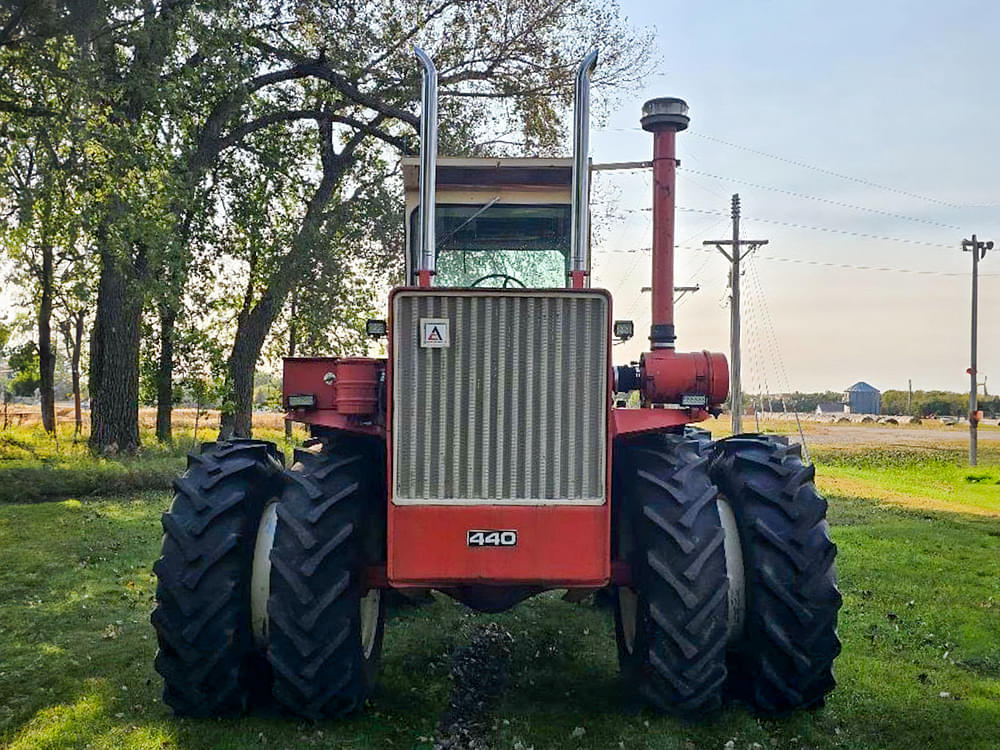
The 440 went into production sometime in the spring of 1972 and over the next four years, 1033 tractors were built. The tractor never changed from a mechanical standpoint, but early in 1974 (starting with serial number 1460), they did change the cosmetics a little bit to coincide with the release of the 7000-Series. The grill was painted black, the cab sides changed from AC Cream to orange. Other than that, the tractor was unchanged.
On paper, the Allis Chalmers 440 actually outsold the Steiger Bearcat, despite being in production for the same length of time. AC sold 1033 of the 440s, Steiger only moved 890 Bearcats. However, I feel like maybe the numbers don’t tell the whole story, though.
By 1972, AC’s dealership network was big – likely as big as it ever was. Steiger’s was nowhere near as large. They were new to the big leagues as far as having a dealer network, so buying one took a lot more effort. Furthermore, Steiger had multiple similar(ish) models plus a few higher-horsepower ones. It stands to reason that if a farmer was considering a lime green monster, they were going to buy one of the bigger ones (the Cougar, for instance).
At the end of the day, I think the 440 would be considered pretty successful, especially given the competition that developed in that segment of the market. Many of the major players would release their second and third 4WD tractor within a year or two of the 440’s introduction, so the space got pretty crowded pretty quickly! Furthermore, it did what Allis Chalmers really needed it to do; fill a hole in the lineup until they could build something in-house…which they did when they brought out the 7580 in 1977!
So what’s the story on this one in South Dakota?
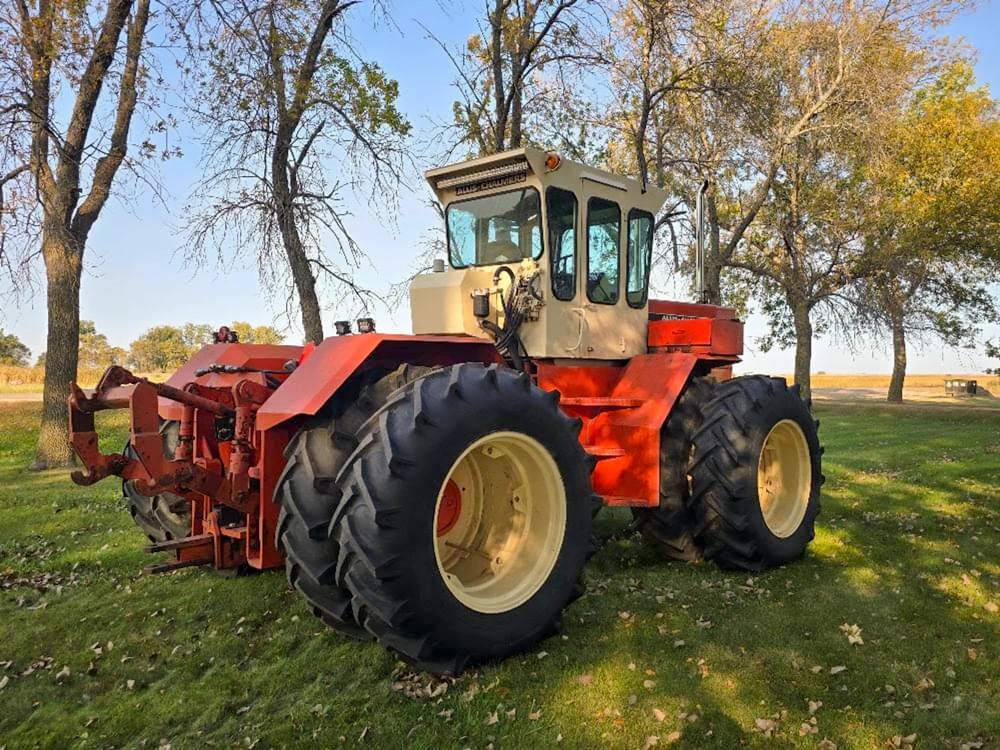
This is a really nice Allis Chalmers 440. It’s been a while since I’ve seen one this clean up for grabs. Oftentimes, they’ve seen better days and have their share of issues. This is not one of those tractors.
I wanted to see if I could find a little more info than what’s listed in the auction, so I reached out and left a voicemail for the owner – a guy named Steve. I felt a little guilty when he called me back this afternoon and told me that he was overseas and his phone connection might be a little sketchy!
Nevertheless, we had a nice chat and he told me a little more about the tractor. He’s a pretty devoted Allis collector, and always had a thing for 440s. This one popped up for sale at a small family farm in Illinois, where it was used for tillage duty on about 40 acres and that’s about it. It always had a spot in the shed at night, and it sounds like it was a much-loved tractor. Needless to say, Steve didn’t let any grass grow under his feet when making the purchase.
Best-Laid Plans…
The plan was always to take it to tractor shows like Gathering of the Orange so others could appreciate it. Steve had planned to pick up a day cab and drop-deck to haul it. However, life got busy as it often does and that never ended up happening. He said, “A tractor like that – especially one that presents as nicely as this one does – deserves better than being stashed away in my barn.”
I believe Steve wants his tractor to go to an orange collector who will do what he always wanted to. I applaud that choice. Many nice tractors rot in barns because their owners never get around to it. Good for you, Steve! I hope it finds the right owner!
The Good/Bad/Ugly
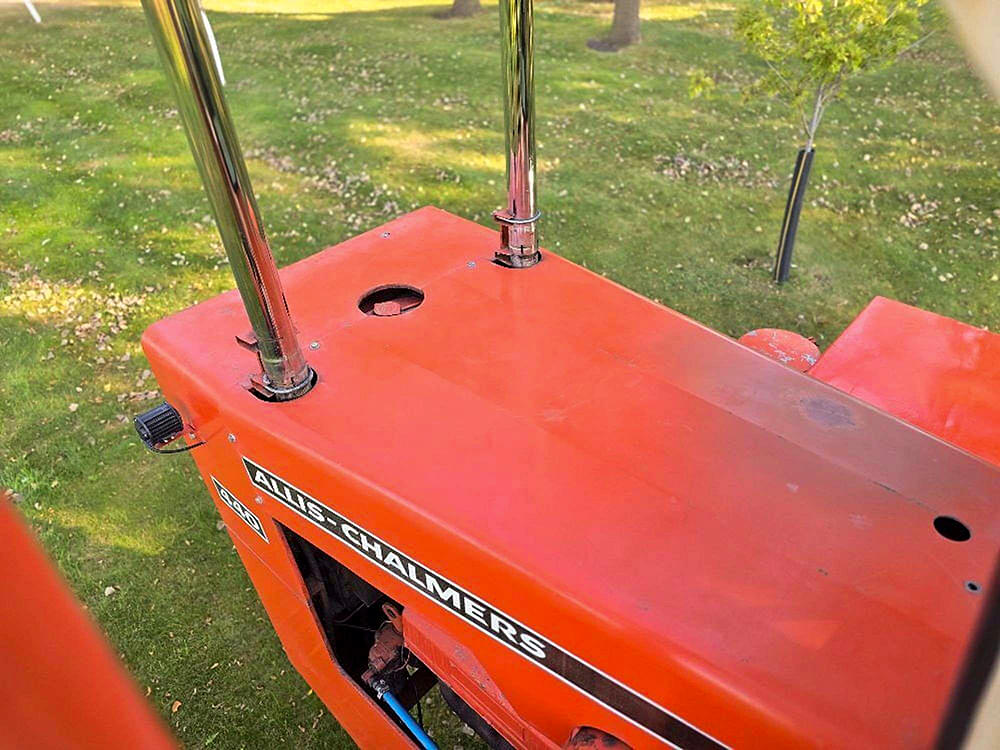
Although not completely original, this tractor is in nice condition and it hasn’t been modified. Steve believes it’s been repainted, but it’s aged pretty well. The tires are almost new, and it features LED lights and a rear light bar. I’d imagine the chrome stacks bark with authority, too! All in all, it presents very well.
Here’s the best part, though. The powertrain and driveline work flawlessly! No issues with the motor whatsoever, according to Steve! This one, shifts, and stops exactly like it’s supposed to!
There are only a couple of things that probably need to be addressed to make this tractor really stand out. The left 3-point cylinder leaks a bit, and needs to be rebuilt. It also needs a partial cab kit. The interiors in these tractors were fairly spartan to begin with, but there was some padded vinyl around the back of the cab that needs to be replaced.
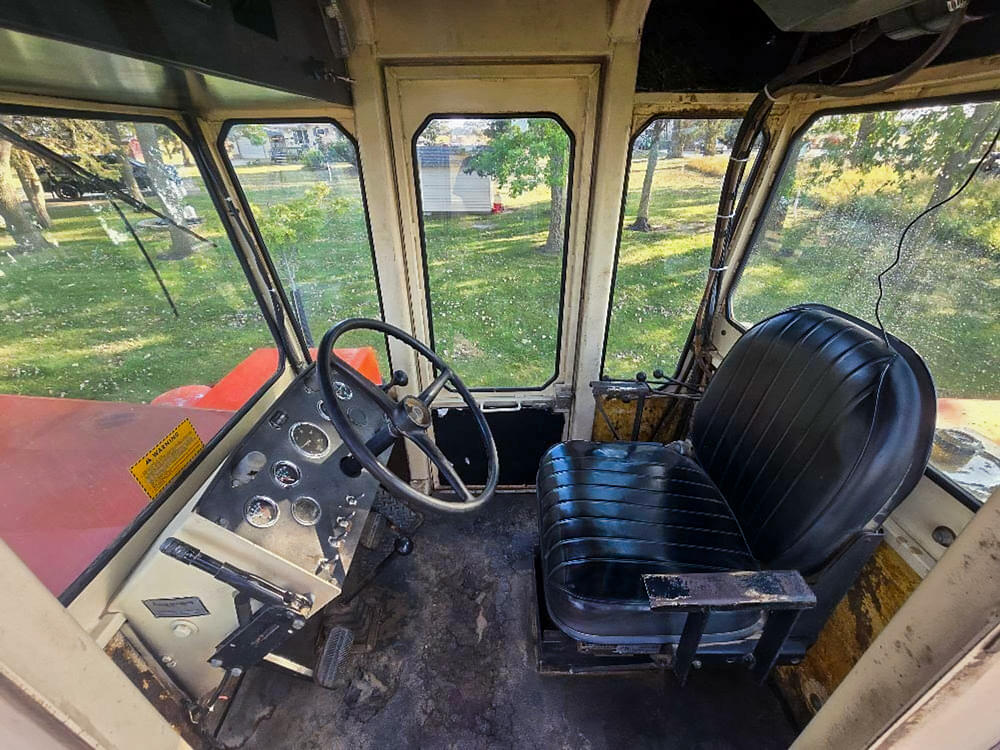
In my mind, there really isn’t anything truly ugly that I can see that needs to be addressed.
What’s it worth?
Honestly, your guess is as good as mine here – it’s pretty rare to find one that’s as clean and straight (and functionally-sound) as this one. There have been a few fairly nice ones that have sold over the past three years between $10-12K, but they didn’t present this nice (and they didn’t have fresh duals; most were on worn singles). I’ve got to think that there’s at least $5-6K in rubber bolted on those axles!
Will it hit $20K? I think it’s possible, but it may take a bidding war to get there. The classic 4WD market isn’t for everybody; these things – even the smaller ones – have a pretty substantial footprint, y’know? This tractor’s got a lot going for it, but it’s still a big ‘ol hunk of metal!
Wrapping up…
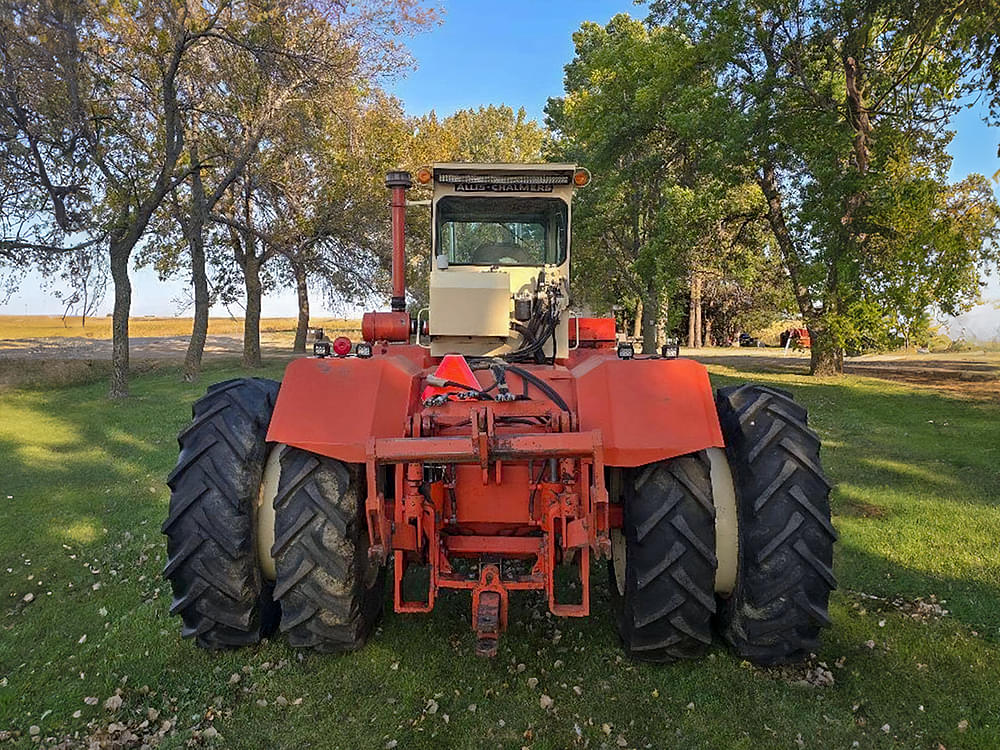
At the end of the day, what this tractor really needs is a new owner who’ll continue to run it occasionally. Not hard, but maybe take it to a plow day once in a while, and haul it to a show a few times a year. I’ve come to learn that the number one killer of reasonably nice (but old) machines is just letting them sit. Engines need to breathe, pumps need to run, and tires need to turn.
Steve’s done that, but he never really got to see the smiles on the faces of Allis fans when they saw the tractor that they’d always wanted Dad to bring home to their farm when they were kids. I’ve seen those looks at tractor shows before, and I know how much joy they bring to owners. Hats off to Steve for wanting to send this one home with a new owner who’ll be able to experience that joy!
Here’s the link for the Tractor Zoom listing, along with a link to bid and get the details on the auction.
‘Til next time, make it a great week!














